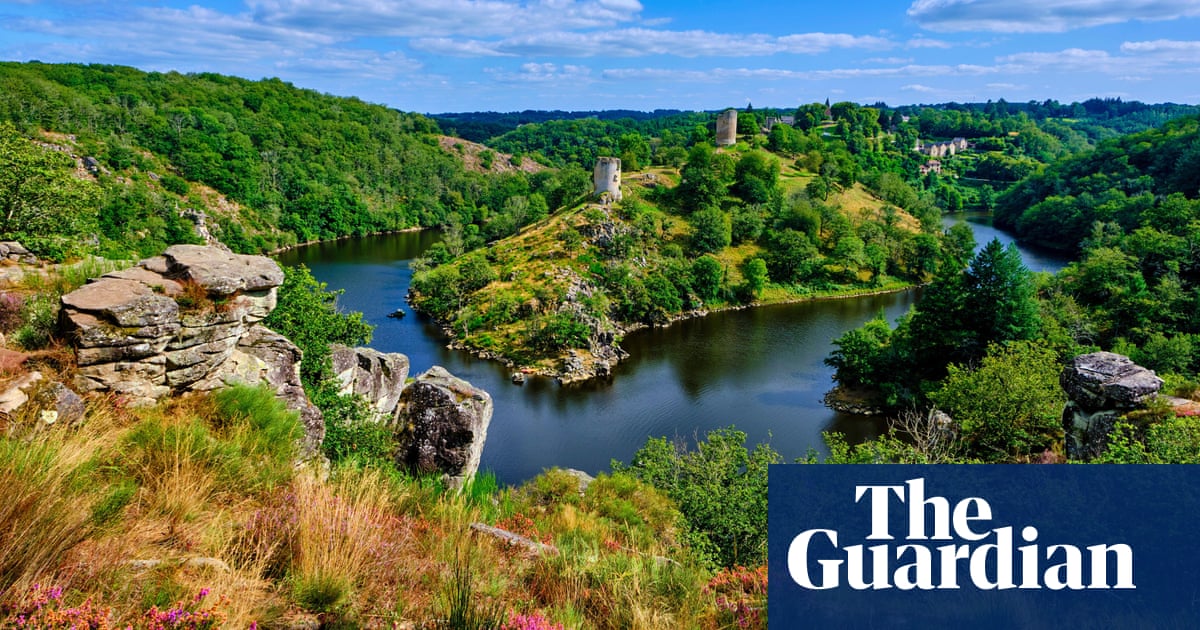As my train inched its way into the station at La Souterraine, some three hours south of Paris on a blisteringly hot June afternoon, the woman in the seat next to me asked: “Vous descendez ici?” Her expression seemed to say “Really? You’re getting off here?”
I could see what she meant. Behind the wire fencing lining the platform lay a handful of industrial buildings alongside nondescript looking farmland.
I had arrived in La Creuse – one of the departments the French call la France profonde – deepest, darkest France – and apparently the country’s least-visited region, north of Limoges and 65 miles south-east of Poitiers.
Within minutes, however, things started to look up: I found myself driving through rolling hills and strikingly green valleys, with overhanging hedgerows separating fields and pastures where the rust-coloured Limousin cattle were grazing in the sun.
I was on a quest to find the landscape that had inspired the painter Claude Monet, a landscape which, unlike his Rouen, Paris and London, which he painted many times, remains relatively unknown.
In early 1889, several years before he started his world-famous water lily series, Monet spent several months in the countryside near the small village of Fresselines, about an hour’s drive north of Limoges.
Like his fellow impressionists, 49-year-old Monet was on the lookout for locations to paint in the open air, and a friend of his, art critic Gustave Geffroy, suggested La Creuse.
Monet was soon captivated by the dashing rapids and angular, heather-laden granite gorge where two sections of the Creuse River converge and spent days over the course of several visits that year clambering along the often-slippery rocks, accompanied by a farmhand who carried his canvases, paints and easel.
By the end of May, he had completed 23 paintings featuring the dramatic landscape in different lights, using a vivid palette of bold mauves and often almost fauvist reds and oranges.
It would be a further 10 years before Monet would complete his much better known series of views of the Thames – soon to be the subject of a major show at London’s Courtauld Gallery (27 Sep 2024–19 Jan 2025) – but experts now agree that although he had already painted Paris’s Saint Lazare station several times, it was in La Creuse that he first attempted to capture the same landscape at different times of day and in different lights.
From Fresselines, a self-guided walking route (maps are available at tourisme-creuse.com or local tourist offices) takes in the sites Monet painted, and so, after a night at the delightful Domaine de la Jarrige – a rural B&B with foxglove- and hen-filled gardens – I set off to see them.
I had arranged to do the circular, three-kilometre route with art historian and Monet expert Christophe Rameix, and we were walking through the dense beech-filled woodland that lines the banks of the Creuse.
Information posts dot the makeshift path showing copies of Monet’s paintings at the spots where he created them. This is “a place of terrific and savage beauty”, Monet wrote to his wife, while bemoaning the cold. He wore special lined gloves in an attempt to keep his hands warm.
Eventually, the path started leading upwards and, after clambering over slippery rocks and up steps, we reached the bank from which Monet had looked down, positioning his easel at the confluence of the two rivers.
“Monet was fascinated by the water,” Rameix told me as the river whooshed past us. “He wanted to capture its movement, even its sound.”
In Fresselines – a tiny hamlet of neatly tended houses, including a church with a bas relief by Rodin – the main attraction, apart from the Monet walk, is Espace Monet–Rollinat, a large, barn-like building with a permanent display about Monet’s time in La Creuse and copies of each work he created here.
Monet was by no means the only painter to be drawn to La Creuse. From around 1880, the village of Crozant, 15 minutes’ drive from Fresselines, had become a go-to countryside destination for impressionists and postimpressonists, spawning what became known as the “Crozant school”.
About 500 painters, including Armand Guillaumin, Léon Détroy, Francis Picabia (later known as a cubist, dadaist and surrealist) as well as the English impressionist Wynford Dewhurst descended on the area, attracted by the spectacular Lac d’Éguzon (imagine a Gallic Windermere, complete with jetties, kayaking, waterfront cafes and guided boat trips), and the dramatic, almost gothic-looking ruins of a medieval castle looming high above it.
By the 1920s the Crozant and Fresselines area had become known as the Vallée des Peintres and one of the artists’ key original hangouts, Hotel Lépinat on Crozant’s main square, now houses an interpretation centre telling the story of this often-overlooked episode with original impressionist works on display.
After an amazingly good value lunch at the fine-dining Auberge de la Vallée opposite (two courses €26), it was only a few minutes’ walk to the Sentier des Peintres (Painter’s Path) which follows a circular route along the banks of the Sédelle River, past rapids and 19th-century mill buildings with information boards showing the works created there.
I could easily have spent days wandering this gorgeous countryside but my final destination was the Rocher de la Fileuse (“spinner’s rock”) – one of the most-painted sites in the area.
After a brief uphill walk amid plum trees, butterflies and the odd scrub of heather, I found myself seemingly on top of the world, looking down on ruined Crozant castle with rivers on either side.
It wasn’t hard see why the rock had proved such an inspiration. I only wondered why La Creuse was not better known.
The trip was provided by Creuse Tourisme, Atout France and Eurostar. Eurostar has returns London -Paris from £78; SNCF returns Paris-La Souterraine from £26.50. Hotel du Lac in Crozant has doubles from €85 B&B. Domaine de la Jarrige has B&B doubles from €129
